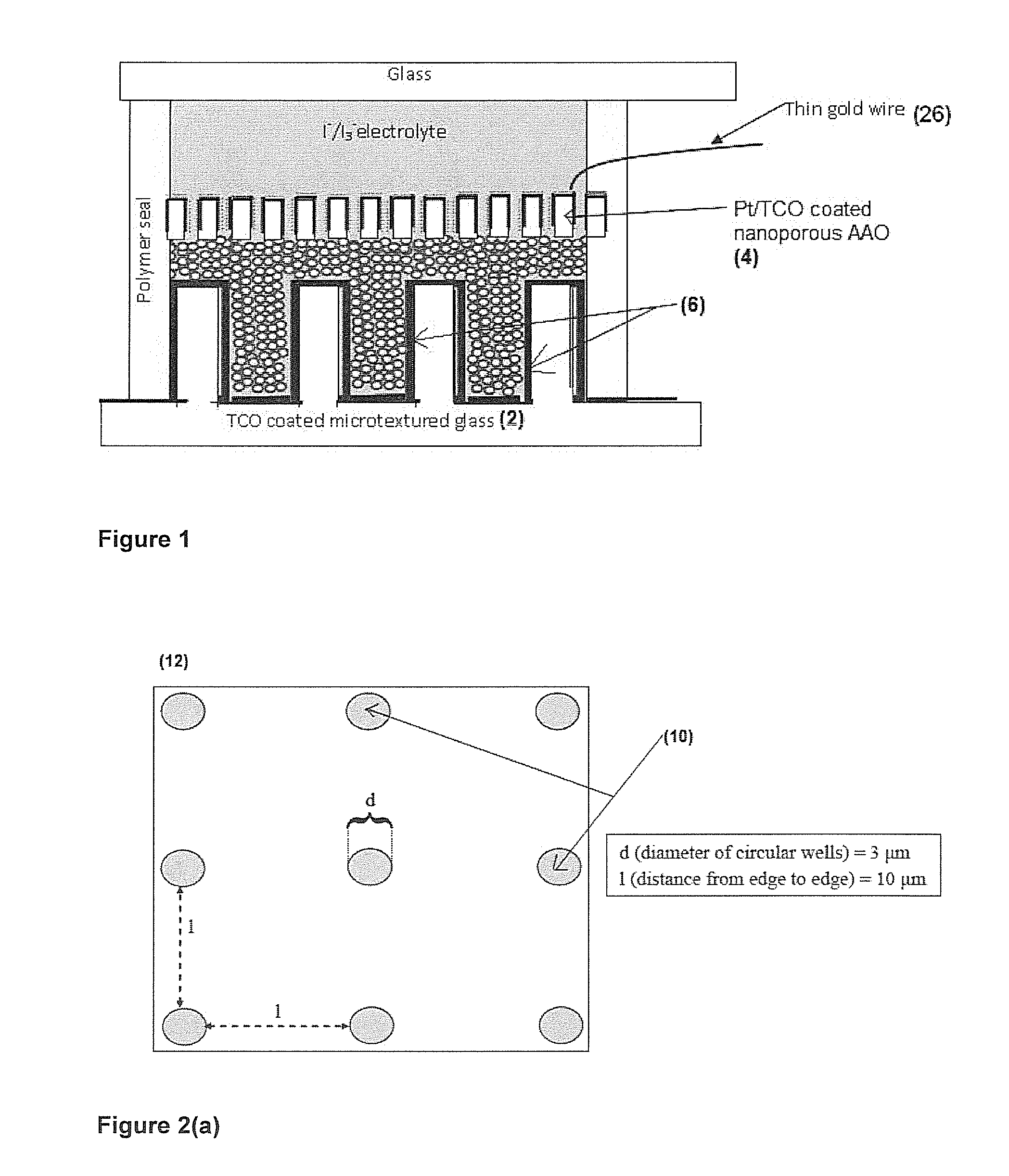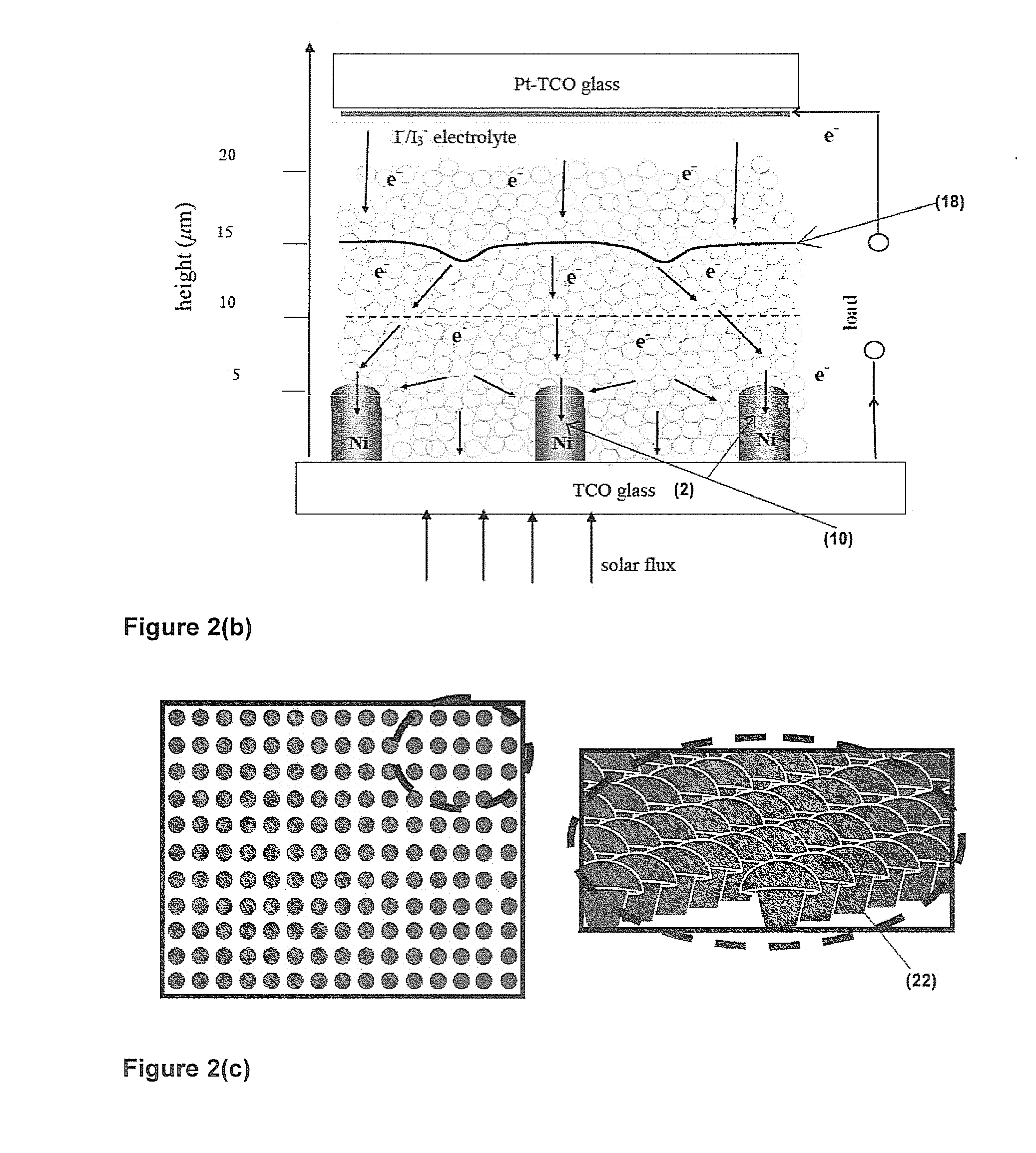Highly efficient dye-sensitized solar cells using microtextured electron collecting anode and nanoporous and interdigitated hole collecting cathode and method for making same
a solar cell, micro-textured technology, applied in the manufacture of final products, electrolytic capacitors, basic electric elements, etc., can solve the problems of low electron-collection efficiency, low energy conversion efficiency, and limit the useful tio2 nanoparticle film thickness, so as to reduce the transport distance of the hole (redox species)
- Summary
- Abstract
- Description
- Claims
- Application Information
AI Technical Summary
Benefits of technology
Problems solved by technology
Method used
Image
Examples
Embodiment Construction
[0021]The present invention presents an improved dye-sensitized solar cell (DSSC) including (A) a TCO-coated microtextured glass substrate (2) as an electron collecting anode, thereby accommodating more TiO2 nanoparticles per unit substrate area without exceeding the electron diffusion length in the TiO2 nanoparticle layer; (B) free-standing metallic micropillars on the TCO glass, which significantly enhance electron harvest in a traditional TiO2 nanoparticle (NP) DSSC. This array of free-standing metallic micropillars on the transparent conducting anode serve as shortcuts for electron diffusion in the nanoparticle network, thereby significantly enhancing the electron harvest beyond that of conventional TiO2 nanoparticle-based dye-sensitized solar cells; (C) a cathode (4) consisting of a TCO-coated nanoporous substrate by atomic layer deposition method. The TCO coating assures the conductivity of the cathode. Furthermore, scattered Pt nanoparticles are then coated on this TCO layer ...
PUM
 Login to View More
Login to View More Abstract
Description
Claims
Application Information
 Login to View More
Login to View More - R&D
- Intellectual Property
- Life Sciences
- Materials
- Tech Scout
- Unparalleled Data Quality
- Higher Quality Content
- 60% Fewer Hallucinations
Browse by: Latest US Patents, China's latest patents, Technical Efficacy Thesaurus, Application Domain, Technology Topic, Popular Technical Reports.
© 2025 PatSnap. All rights reserved.Legal|Privacy policy|Modern Slavery Act Transparency Statement|Sitemap|About US| Contact US: help@patsnap.com



